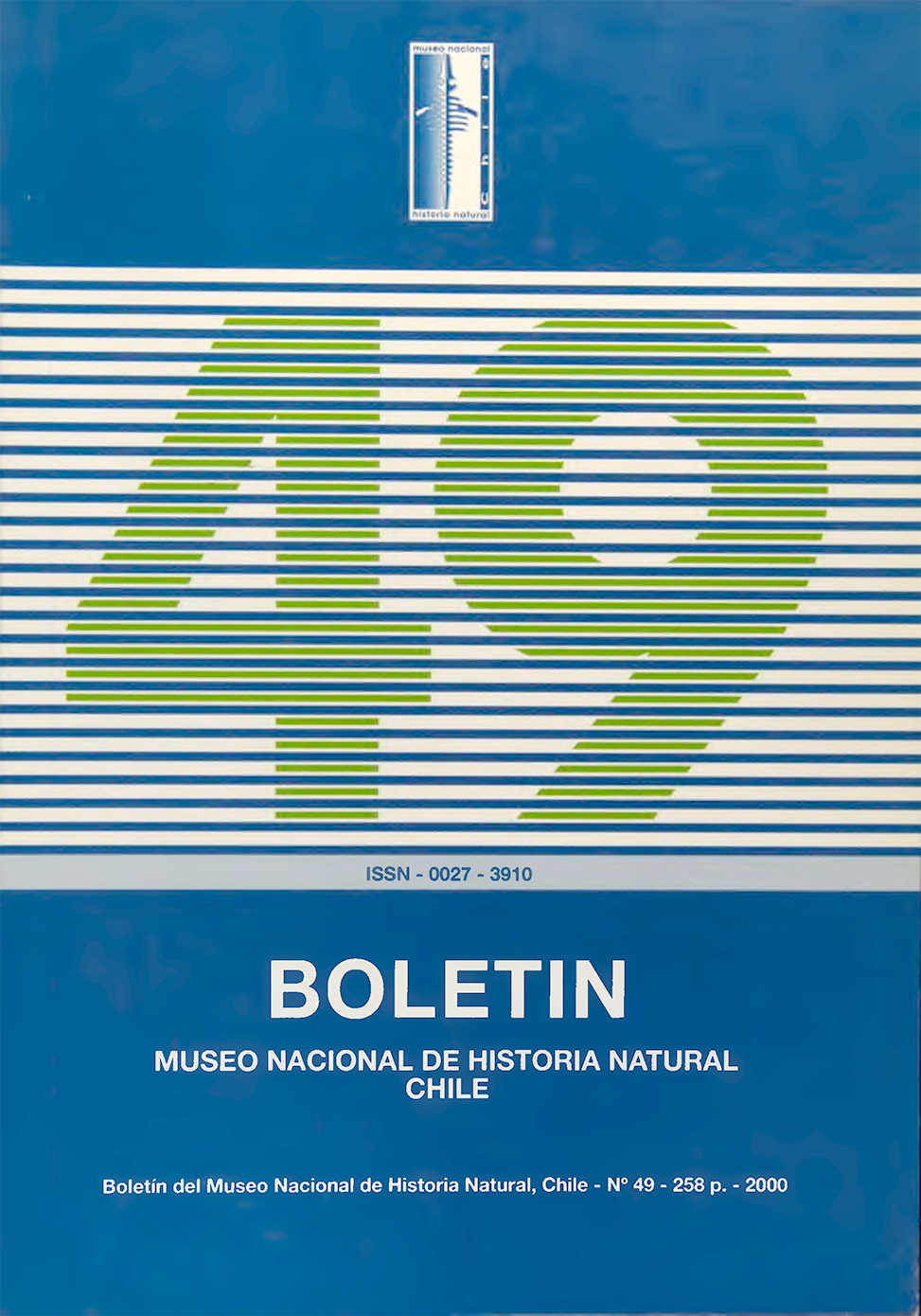Archaeobotanical study of El Carrizo cave, Cuesta de Chacabuco
DOI:
https://doi.org/10.54830/bmnhn.v49.2020.348Abstract
Botanical remains recovered from archeological sites are of great utility to understand historical dynamics of vegetation, paleoenviromental reconstruction, and archaeological use by local human groups. Here I study seeds recovered from a flotation pit excavated in El Carrizo cave, Cuesta de Chacabuco, Central Chile. 23 natural strata were recognized, dated from 300 years a.C. until present days. Seeds were more abundant in superficial strata, and introduced species were the most abundant. Several strata had more than 50% ofthe seeds burned, generally associated to bonfires. Seeds of Muehlembeckia hastulata, Echinopsis chilensis and Calandrinia sp. were the most abundant. Ecological attributes, such as broad distribution associated to different habitat types, seed dispersal patterns, and behavior of its dispersal agents, suggest that these species were transported to the cave by humans. This hypothesis is also supported by the fire evidence found in the cave. Madia sativa was the only probably cultivated species present in the site. However it was present only in superficial strata, dated ca. 1.250years a.C. Low abundance of Prosopis chilensis seeds in the cave, as well as late appearing of Acacia caven are noteworthy.
Downloads
Downloads
Published
How to Cite
Issue
Section
License

This work is licensed under a Creative Commons Attribution-NonCommercial-NoDerivatives 4.0 International License.




